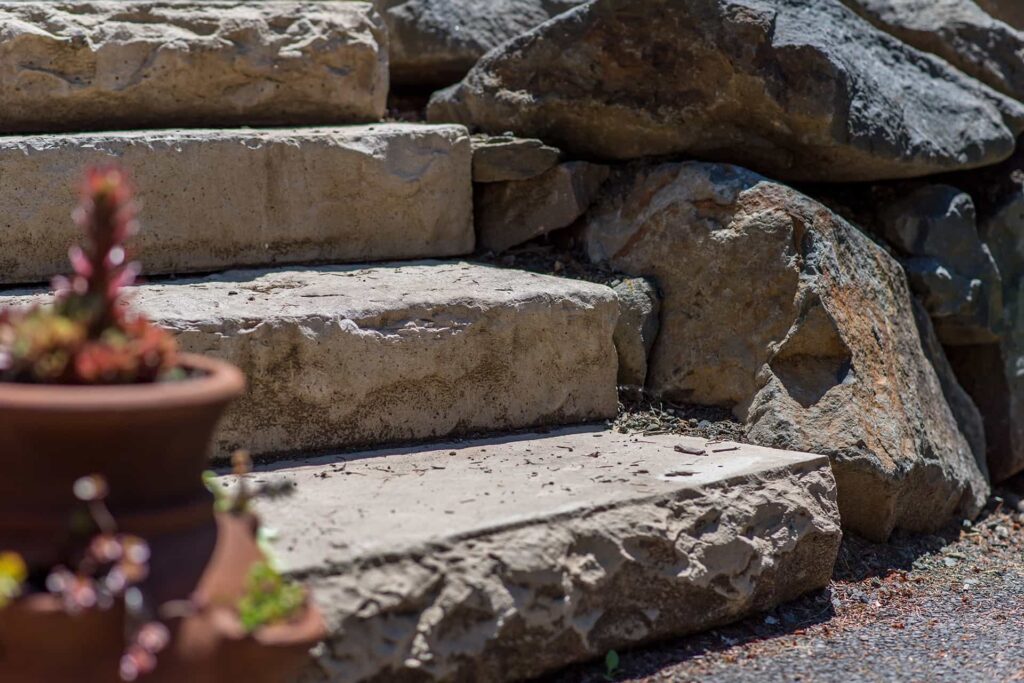In the world of outdoor living, where aesthetics meet functionality, the paver walkway stands as a testament to enduring style and practical design. For homeowners blessed with the unique topography of a sloped yard, the challenge isn’t just about creating a path; it’s about crafting an elegant transition that respects the natural contours of the land while providing safe and inviting access. This is where paver walkways truly shine, offering a blend of robust engineering and artistic versatility that allows them to gracefully navigate inclines, creating pathways that are as beautiful as they are durable.
The initial thought of a walkway on a slope might conjure images of slippery surfaces or awkward steps. However, modern paver technology and design principles have revolutionized how we approach such terrains. Gone are the days of simple, utilitarian concrete slabs that often crack and deteriorate under the stress of shifting ground. Today, paver walkways are sophisticated systems, meticulously designed to interlock and adapt, providing a stable and long-lasting solution even on the most challenging gradients.
This article will delve into the myriad ways paver walkways excel on sloped terrain, showcasing their inherent advantages in style, durability, and practical application.
The Challenges of the Incline: Why Slopes Demand a Specialized Approach
Sloped yards, while offering dramatic visual appeal and often better drainage, present distinct challenges when it comes to hardscaping. Water runoff can be a significant issue, leading to erosion and undermining conventional walkway materials. Soil movement, freeze-thaw cycles, and the inherent force of gravity all play a role in testing the resilience of any outdoor structure. A poorly designed or installed walkway on a slope can quickly become a liability, leading to safety hazards, costly repairs, and a diminished aesthetic.
This is where the engineered advantages of pavers become paramount. Unlike poured concrete, which acts as a monolithic slab susceptible to cracking under differential settlement, pavers are individual units. This modularity allows them to flex and adapt to minor ground movement without fracturing. The gaps between pavers, often filled with polymeric sand, facilitate drainage, preventing water from pooling and minimizing erosion. This inherent flexibility and permeability are crucial for maintaining the integrity and longevity of a walkway on an incline.
Stepping Up in Style: The Aesthetic Versatility of Pavers
Beyond their structural prowess, pavers offer an unparalleled range of aesthetic options, allowing homeowners to transform a functional necessity into a captivating design element. On a sloped yard, this versatility is particularly impactful. Instead of a utilitarian ramp, a paver walkway can become a winding journey, a series of gracefully tiered steps, or a combination of both, seamlessly integrating with the surrounding landscape.
- Color and Texture: Pavers come in an astonishing array of colors, from earthy tones that blend with natural surroundings to vibrant hues that create a striking contrast. Their textures range from smooth and sophisticated to rugged and natural, allowing for endless design possibilities that complement any architectural style. Imagine a walkway of deep charcoal pavers creating a dramatic contrast against lush green foliage, or a path of warm, sandy-toned pavers winding through a vibrant flower garden.
- Patterns and Layouts: The modularity of pavers allows for intricate patterns, adding visual interest and depth to the walkway. Herringbone, basketweave, running bond, and circular patterns can be employed to create a sense of movement, define spaces, or simply add a touch of artistic flair. On a slope, these patterns can be strategically used to guide the eye, making the ascent or descent feel more inviting and less strenuous.
- Integration with Landscaping: Paver walkways are not isolated elements; they are an integral part of the overall landscape design. On a slope, they can be flanked by retaining walls built from complementary paver materials, creating terraced garden beds that add visual appeal and help manage erosion. This synergistic approach allows for a cohesive and harmonious outdoor space where the walkway seamlessly blends with planting areas and other hardscaping features.
The Engineering of Elegance: How Pavers Conquer Gradients
The true genius of paver walkways on sloped terrain lies in their engineering. Professionals understand that successfully navigating an incline requires more than just laying down pavers; it demands meticulous planning and execution to ensure stability, safety, and longevity.
Paver Tiering and Paver Retaining Walls
For steeper slopes, a series of gently rising steps interspersed with level landings is often the most practical and aesthetically pleasing solution. These landings provide natural resting points and break up the continuous incline, making the journey more comfortable. Each tier is typically supported by a sturdy retaining wall, built from a complementary paver material, which not only holds back the soil but also adds a significant architectural element to the landscape. The interlocking nature of segmental retaining wall blocks provides immense strength and stability, crucial for managing the forces on a slope.
Natural Stone Gradients and Stone Ramps
For gentler slopes, a continuous ramp constructed with pavers can be an ideal solution, particularly for accessibility. Even on a ramp, the slight gaps between pavers offer better traction than a smooth, monolithic surface, reducing the risk of slips, especially when wet. Expert installers carefully calculate the appropriate gradient to ensure comfort and safety for all users.
Sloped Base Preparation is Key
The success of any paver installation, especially on a slope, hinges on meticulous base preparation. This involves excavating to the correct depth, laying down multiple layers of compacted crushed stone, and then a bedding layer of sand. This robust foundation provides essential stability, distributes weight evenly, and allows for proper drainage, preventing settling and shifting that could compromise the walkway’s integrity over time. On a slope, proper compaction and layering are even more critical to resist the forces of gravity and water runoff.
Install Edge Restraints and Drainage
To prevent pavers from shifting outwards on a slope, edge restraints are essential. These can be discrete plastic or metal barriers or integrated paver border courses that provide a strong, stable perimeter. Effective drainage solutions are also paramount. This might involve subsurface drains, French drains, or simply designing the walkway with a slight crown to shed water away from the structure and prevent erosion at its edges.
Safety First: Ensuring a Secure Passage
While style and durability are important, safety is paramount, especially on a sloped walkway. Pavers inherently offer advantages in this regard:
- Traction: The slightly textured surface of most pavers provides better grip than smooth concrete, particularly when wet. The small gaps between pavers also contribute to better traction.
- Defined Steps: When steps are incorporated, the distinct edges of each paver create clear visual cues, reducing the risk of missteps. Contrasting paver colors can be used to highlight the edge of each tread, further enhancing visibility and safety.
- Integrated Lighting: For evening use, integrated low-voltage lighting along the walkway can dramatically improve safety and create a beautiful ambiance. These lights can be subtly incorporated into the paver system, illuminating the path without being obtrusive.
The Professional Edge: Why Expert Installation Matters
While the allure of a DIY project can be strong, the complexities of installing a paver walkway on a sloped yard truly underscore the value of professional installation services. An experienced paver contractor brings a wealth of knowledge and expertise to the table, ensuring that your walkway is not only beautiful but also structurally sound and long-lasting.
Project Site Assessment and Paver Design
Professionals conduct thorough site assessments, analyzing soil conditions, drainage patterns, and the precise gradient of your slope. They then translate this information into a meticulously planned design that optimizes the walkway’s functionality and aesthetic appeal. This often involves detailed drawings, material selections, and a clear understanding of local building codes.
Project Engineering Expertise
Navigating slopes requires a deep understanding of civil engineering principles. Professionals know how to properly calculate rise and run for steps, design effective retaining walls, and implement robust drainage solutions that will stand the test of time. They understand the critical importance of a properly prepared base and employ specialized equipment to ensure optimal compaction.
Specialized Paver Equipment and Paver Techniques
Installing pavers, especially on a slope, can be physically demanding and requires specialized equipment for excavation, compaction, and material handling. Professionals have access to these tools and the trained personnel to operate them safely and efficiently. Their experience ensures that all techniques, from laying the bedding sand to cutting and setting pavers, are executed with precision.
Project Efficiency and Paver Quality
A professional team can complete the project efficiently and to the highest standards of quality. Their experience minimizes errors and ensures that the final product not only meets but exceeds your expectations, providing a durable and aesthetically pleasing walkway that will enhance your property for years to come.
Warranty and Peace of Mind
Reputable professional installers often offer warranties on their workmanship, providing you with peace of mind knowing that your investment is protected. This commitment to quality and customer satisfaction is a hallmark of a reliable service.
Conclusion
In conclusion, a sloped yard, far from being a limitation, presents a unique opportunity to create a stunning and functional outdoor space with a paver walkway. The inherent advantages of pavers – their modularity, aesthetic versatility, and structural integrity – make them the ideal choice for navigating inclines with both grace and resilience. From elegantly tiered steps to gently winding ramps, paver walkways transform challenging gradients into inviting passages, seamlessly blending with the landscape and enhancing your property’s curb appeal.
While the beauty and durability of pavers are undeniable, the expertise required to properly install them on a slope is significant. For homeowners seeking to invest in a truly exceptional and enduring outdoor feature, enlisting the services of professional paver walkway installers is an investment that pays dividends in safety, style, and long-term satisfaction. Let skilled hands transform your sloped terrain into a masterpiece of outdoor design, where every step is a testament to style and stability.


